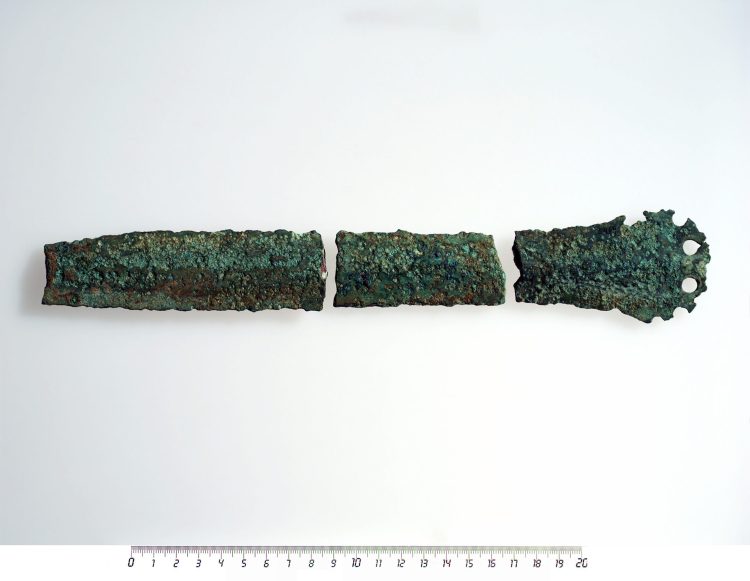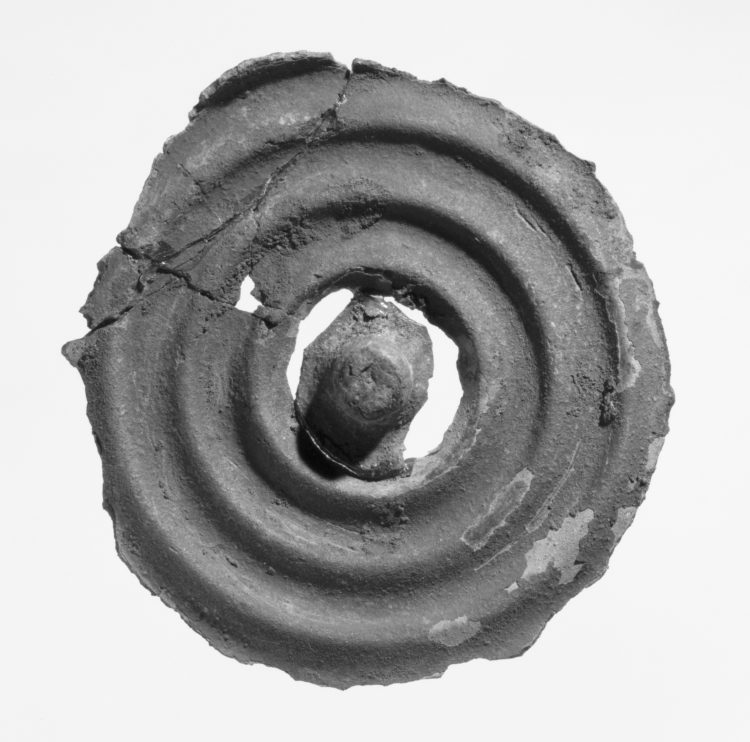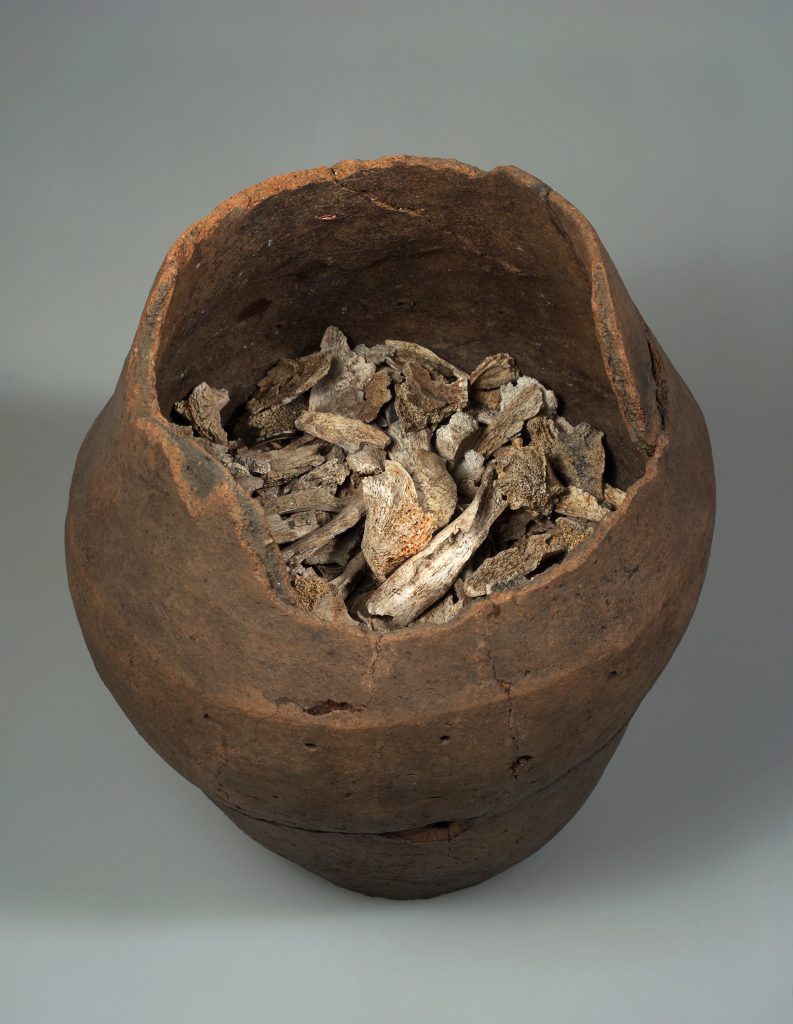
Three fragments of a riveted sword. There are six rivet holes; the bottom two holes are almost gone as the shaft plate is damaged around the edge. There is a marked midrib, and the blade widens before tapering and converging towards the tip, which is missing. The fragments are heavily corroded, although some patches of green patina remain. The sword is a Sögel type. Current length: 28.6 cm (B05469/a)
Complete palstave with long and slender blade and decoration, a so-called weapon palstave. The ax is heavily corroded. However, faint remains of decoration can be seen on the side facets and blade. There are parallel horizontal lines and oblique lines (possibly hatched triangles) on the sides of the neck. The transition to the blade is marked with parallel horizontal lines and a rib, and on the blade there is a triangle or Y shape consisting of double lines. The sides of the blade are marked with ribs. Both neck and edge are damaged. Length: c. 17 cm. Width: 3.8 cm above the edge. B05469/b)
Location:
Vanse, Farsund, Vest-Agder
Context:
No information about the find.
Dating:
Early Bronze Age period 1-2











